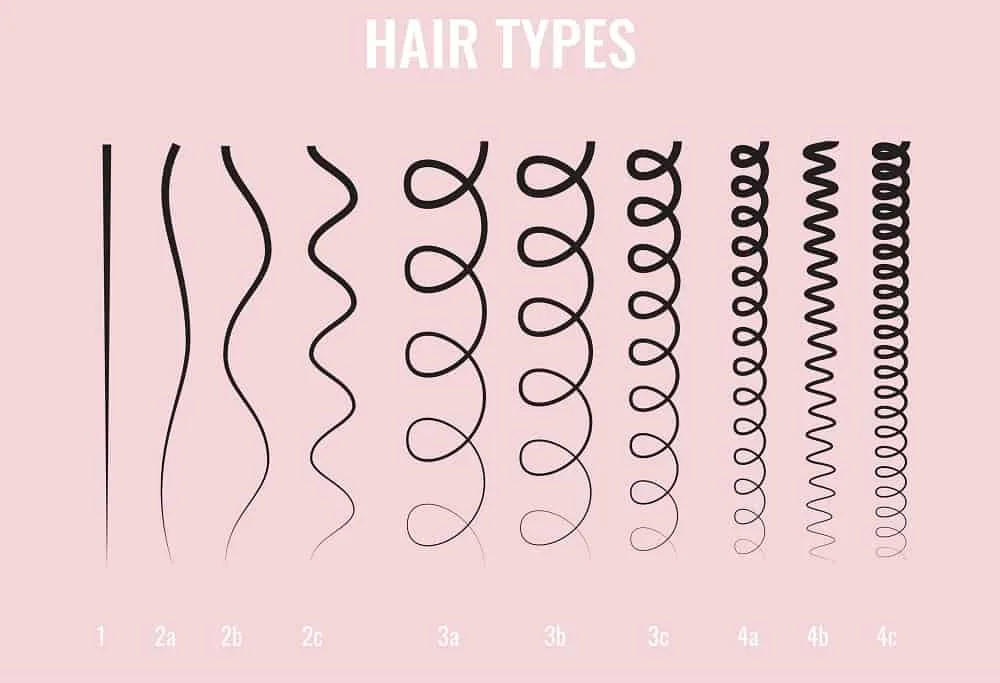You’ve probably heard of hair types before, but what are they, and why is knowing yours so important? Knowing your hair type is essential to being able to care for your tresses properly.
Keep reading to learn everything you need to know about the 4A hair type.
Understanding Hair Types

The most widely used hair typing system was developed by Andre Walker, which breaks hair down into four main categories:
- Type 1 is straight hair
- Type 2 is wavy hair
- Type 3 is curly hair
- Type 4 is kinky hair
Within these primary classifications are three subcategories that describe the texture of the hair.
- Hair types are fine or thin and soft
- B hair types are medium density and have a lot of body and volume
- C hair types are naturally thicker and drier
4A Hair Defined

If your hair type is 4A, then your hair is fine and soft but extremely kinky. The individual strands have a tightly-coiled ‘S’ shape. Each 4 hair type is similar to these characteristics, but certain qualities make them all unique.
Here are the traits that make 4A hair different:
- Maintains curl pattern and definition well when adequately moisturized
- Can experience a lot of shrinkage with individual styles
- More delicate than the other 4 hair types
Taking Care of the 4A Hair Type
The most important thing to remember with 4A hair is moisture, moisture, moisture! This type of hair is prone to dryness since the tight coils prevent the natural oils from the scalp from traveling down the strands.
Not only will hydration-packed products keep your kinky hair soft and manageable, but it will also cut down the frizz and make styles last longer.
Cleansers
Getting the right cleanser is the first step in your healthy 4A hair regimen. Be sure that you choose something free of harsh chemicals like sulfates and alcohols that strip away your hair’s moisture.
Still, it’s crucial to get a cleanser strong enough to lift product buildup and debris away from the scalp. Having a healthy scalp is the foundation of having healthy hair. That’s because your scalp is where your hair follicles exist, and these are the blood vessels and nerves that allow your hair to grow and thrive.
By washing it with a gentle cleanser two to three times a week, you’ll keep your hair shafts and follicles healthy. As a result, your hair will be fuller, thicker, and grow faster.
Conditioners
Never be skip conditioning, no matter your hair type, but it especially makes a difference in 4A hair. By conditioning your locks regularly with a high-quality conditioner, you’ll keep your hair healthy, strong, and moisturized.
Like any other product you use, always stick with products free of harmful chemicals, dyes, and fragrances. Look for conditioners formulated with natural botanical ingredients and make sure they’re rich in emollients like shea butter, coconut oil, or argan oil.
It’s also good to have a regular conditioner and a deep conditioning hair mask you use once a week. Using one of these every week will provide your 4A tresses with a surge of hydration that will help keep them softer and smoother longer. These are especially good if you’ve recently used heat on your hair.
Moisturizers
Cleansing and conditioning aren’t enough. You need to moisturize your hair daily to ensure it stays protected. These also give your hair the hydration it needs between washes. You can apply conditioners to wet or dry hair, and they come in many forms.
Some oils will keep your scalp moisturized, and hair serums are like heavier oils that not only hydrate but cut down on frizz. There’s also hair grease, which are thick emollients that provide long-lasting protection for your hair and scalp.
A good moisturizer can also make styling your hair a lot less challenging by making it softer, silkier, and more manageable.
Growing and Protecting 4A Hair

Unfortunately, many women with 4A hair struggle to grow it out. Instead of giving in to the myth that it’s impossible to grow out your hair, know that you can do it with the right routine.
To start growing your while keeping it protected, here’s a weekly regimen you should follow to keep your hair healthy:
Create a Hair Washing Schedule
I mentioned earlier the importance of washing the 4A hair type two to three times a week. This works best on a regular schedule, for instance, every other day or every three days. By keeping up with a cleansing routine, you’ll make sure your scalp stays refreshed, which naturally encourages hair growth.
Use a Co-wash Once a Week
In addition to a regular cleanser, you should include a Co-wash in your hair washing schedule. Think of it as a cleansing conditioner that will remove buildup from your scalp without completely removing the natural oils. It’s just another way to keep your hair moisturized.
Weekly Deep Conditioning
Weekly deep conditioning adds another layer of moisture that ensures your hair is always soft and manageable. This also protects against hair damaging factors out of your control like cold, dry weather, or UV light.
Wrap Your Hair When You Sleep
This type of hair needs 24/7 protection, even while you sleep. Pillowcases and blankets rub against the hair and snag it, causing damage, which is why you need to cover it with a silk scarf, bonnet, or cap. Silk is perfect for hair because hair doesn’t catch on it, so your hair won’t lose moisture while you sleep.
Covering your hair during sleep is also perfect for extending the life of your protective styles.
Moisturize Your Hair and Scalp Daily
Whether you’re wearing your hair natural or straight, you should be moisturizing every day. This also includes your scalp. Not only do you want to keep your scalp free of buildup, but you also want to make sure it’s hydrated because this will pass down to your hair.
When you moisturize your hair, be sure to choose lightweight products that will absorb easily without weighing down your curls. Make sure to cover your hair root to tip, concentrating on your ends the most.
Choose Protective and Natural Styles
Earlier, I told you that protective and natural hairstyles were the best, but it’s not just for protecting your hair. These styles also promote hair growth because your locks aren’t getting damaged from overhandling. They also help moisture stay in your hair. Both of these conditions are precisely what your hair needs to grow.
Keep Your Ends Trimmed
Lastly, one of the best ways to grow your hair is to keep your hair trimmed. This might sound contradictory to what you’re trying to achieve, but that couldn’t be further from the truth. Dry, damaged ends will stunt your hair’s growth, so getting them trimmed every six weeks will ensure this doesn’t happen and keep the growth moving.
Extra 4A Hair Care Tips
Now that you have the essential information you need to care for your hair, you can start sticking to your healthy hair routine. But there are some other rules I want to share. With these tips, you’ll be setting your 4A hair up for guaranteed success!
Use the Right Water Temperature
Whenever you wash your hair, be sure to use lukewarm water. Hot water will only dry your hair out and can even cause damage to your ends. This is also true when it comes to using conditioners. Once you’re ready to rinse it out, use cold water. This will seal the hydration from the conditioner into each strand by closing your hair’s cuticle (and it helps fight frizz).
Avoid Heat and Chemicals
With 4A hair, you must limit your use of hot tools and chemicals. Not only will these two things strip your hair of moisture, but they can even destroy your hair’s structure. If you do decide to straighten your hair, make sure to use an all-natural heat protectant to reduce the amount of damage your hair experiences.
Handle It With Care
This type of hair is very delicate and fine, which means it’s especially prone to tangling. The best way to detangle your hair is to use your fingers. Gently separate your hair while after applying a moisturizer to prevent breakage or hair loss. You can also use a detangling comb, but remember, be gentle!
How to Style 4A Hair

The fun thing about having 4A hair is that you have many styling options at your fingertips. The best styles are protective ones that you can wear for days, or even weeks, at a time. With protective styling, you’re reducing how much you handle your hair, which helps prevent damage and retain moisture.
Final Thoughts
With this comprehensive guide, you can take care of your 4A hair type the right way. As long as you keep it moisturized, use protective styles, and stick to products with a medium to strong hold, your hair will stay healthy.
Related Topics:
